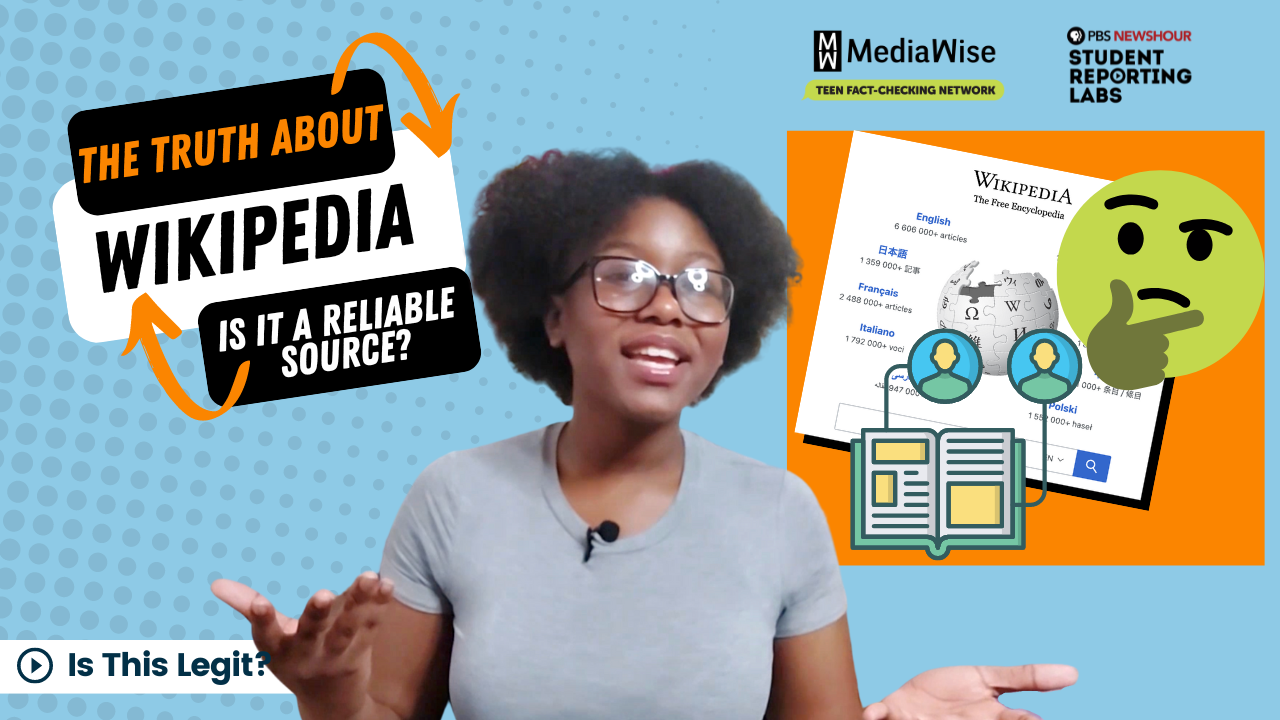When Queen Elizabeth II died last year, she went from “is” to “was” in a split second on Wikipedia.
This is the online encyclopedia that teachers have told students countless times to refrain from using as a reliable source for papers, projects and other related purposes. The danger, they say, is that anyone can edit most Wikipedia pages.
But Wikipedia has millions of users, so they must be doing something to ensure the information we’re getting is correct … right?
Here’s a deep dive into the popular online encyclopedia.
Background
Wikipedia was founded in 2001 and is a free internet-based encyclopedia with articles on various topics: airliners, conspiracy theories, Taylor Swift, toast sandwiches, even the Hundeprutterutchebane (that’s a famous roller coaster in Denmark with a dog-flatulence theme — really).
It operates under an open management style, which means it’s created by a community that works together to create articles. Almost anyone can write and edit articles, which can be good, bad and sometimes even ugly.
Wikipedia has received its fair share of criticism over the years, but it has evolved as a platform, and now there are some really useful parts.
The good
The best part of Wikipedia is its accessibility. It’s an easy and fast way to get a general understanding of a topic. All the information in a given article should be cited so even if you don’t want to read the whole article, you can just jump to the bottom and click on a linked article in the Notes section.
Another plus about Wikipedia is its content policies:
- All articles must be written and edited from a neutral point of view. That means they must be fair and without bias.
- No articles can contain original research. All of the information must come from a reliable and already published source.
- All articles must be verifiable. Both readers and editors must be able to double-check that the information comes from a trustworthy source.
These policies are monitored by volunteer administrators, nearly 1,000 in the English version of Wikipedia, who can delete articles and files, protect and unprotect pages and block and unblock users.
If a story is weak or not correctly cited, a page editor can put a warning at the top. And on the flip side, if the information has been verified and is trusted, you may find a green circle with a plus sign on the top right.
Finally, Wikipedia has security measures to make sure not just anyone can edit a given article, as well as a tracking system — a history section — so that any user can see all the edits made to any article.
The bad
As we said before, nearly anyone can edit the articles, which means people can sometimes insert misinformation or a silly detail into an article. Here’s one example: Someone edited the actress Emma Stone’s page to say that she “is a hot American actress with a beautiful smile. In 1987, she fell out of the sky as an angel.” This type of page vandalism is usually spotted quickly and corrected.
For readers, Wikipedia is easily accessible with tons of articles, but it can be difficult for editors. Editing requires the knowledge of a special markup language, and it is difficult to edit on mobile devices like your phone or tablet.
Finally, it can take a while for article edits to be translated into other languages, meaning people can have different versions of the facts. And depending on the situation, they might never get the correct version.
The ugly
Wikipedia is also known to have hosted many hoaxes. Here are just a few:
- Journalist John Seigenthaler discovered that his Wikipedia page named him as a suspect in the assassinations of U.S. President John F. Kennedy and U.S. Attorney General Robert F. Kennedy.
- Someone wrote an article about Clyde McKnight, a real American rapper, falsely claiming that he had collaborated with Paris Hilton, Lil Wayne and Nicki Minaj.
- An article described a gruesome medieval torture device called “Crocodile Shears” — completely made up.
Wikipedia has an article of its own listing dozens of hoaxes that people have perpetrated on its pages. Some hoaxes are spotted instantly and removed — but others take years to surface.
Some tips for using Wikipedia
- Explore the footnotes and ask yourself the three questions from the Stanford Research Education Group: Who is behind the information? What is the evidence? What do other sources say about it?
- Look at the locks: A padlock icon means the page cannot be edited. The icon is usually temporary and done to prevent vandalism or control “editing wars.”
- Look for tags at the top of the pages. These are used to indicate that there might be a problem on the page and that further editing or verification may be needed.
- Finally, make sure you use Wikipedia responsibly. Please don’t use it as a main source for evidence. Follow the footnotes — “read upstream” and go directly to original, reliable sources.
Rating
Mostly Legit. Based on the research we’ve reviewed, we can rate Wikipedia as “Mostly Legit.” While it may not be 100% reliable, Wikipedia’s collaborative team, editing rules and content policies make it reasonably reliable — in fact, at least as reliable as its competitor, the Encyclopedia Britannica.
NOTE TO TEACHERS: This article is featured in a free, one-hour lesson plan that teaches students the good and the bad of Wikipedia and how to use it responsibly. The lesson is available through PBS LearningMedia, and includes a lesson summary and a handout, among other resources.






